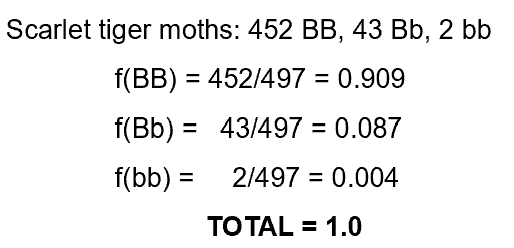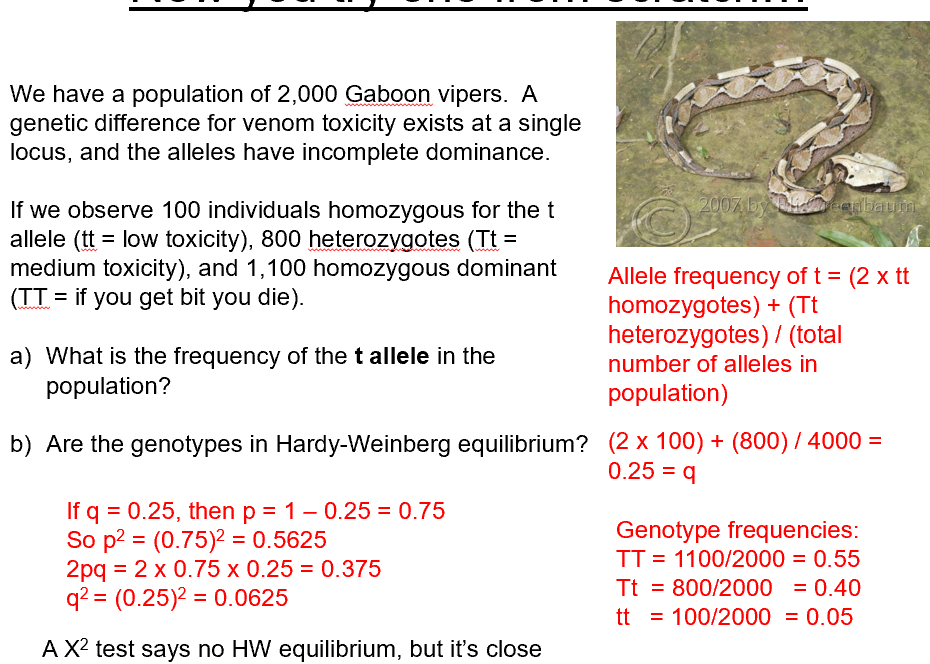Population Genetics Pt. A
1/22
Name | Mastery | Learn | Test | Matching | Spaced |
|---|
No study sessions yet.
23 Terms
Transmission genetics
Genetic processes that occur within individuals and how genes are passed from one individual to another
Molecular genetics
Molecular structure of heredity, DNA and how biochemical process of the cell transfer genes to phenotype
Quantitative genetics
Transmission of traits in large groups of individuals, where traits are simultaneously determined by many genes
Population genetics
Transmission of traits in large groups of individuals, where traits are determined at one or a few genetic loci.
Neo-Darwinian Synthesis
Fusion of Mendel’s laws of inheritance (rediscovered in 1900) with Darwin’s evolution was done by Ronald Fisher, Sewall Wright and J.B.S. Haldane.
They explained Darwin’s evolution in context of genetics- great step forward in biology.
Fisher: Statistics and pop. genetics in 1920s
Wright: theoretical pop. genetics, bitter arguments with Fisher about importance of genetic drift
Haldane: Indian geneticist, mathematical theory of natural selection.
Gene pool
Genes shared by individuals in a population. Some alleles are common/rare
KEY CONCEPT: In pop. genetics…
We study the gene pool of a pop. not the genotypes of individuals.
Frequency
Proportion (genotype/alleles) that always ranges between 0-1
Genotype frequence
Count number of individuals within a given genotype, divide by total of individuals.

Frequency
Proportion (genotype or alleles) that always ranges between 0 and 1.
Diploids
A cell or nucleus containing two complete sets of chromosomes, one from each parent.
Genetic Drift
Random fluctuations in the frequencies of alleles or haplotypes, often leading to some alleles being fixed (100% frequency)- It is a form of nonadaptive evolution, and is a consequence of chance.
Equilibrium
HW formula explains why brachydactyly allele frequency stays stable over generation, OR REACHES EQULIBRIUM.
Assumptions of HW Principle
In absence of evolutionary forces (mutation, migration and natural selection), allele and genotype frequencies will remain stable from generation to generation).
Assumptions of HW Principle
Mating is random (for locus in question), or panmictic
The population is infinitely large, and thus genetic drift is not likely.
Genes are not added from outside the population (gene flow or migration).
Mutation does not occur.
All individuals have equal probabilities of survival and reproduction.
Allele frequency symbols
Freq of A (dom. allele) = p
Freq of a (rec. allele) = q
First, p+q=1
E.G:
p=0.5 so therefore, q = 0.5
Hardy-Weinberg Formula
Population genotype frequencies reaches HW equilibrium after 1 GENERATION of random mating.
Probabilities in HW
Prob. of homozygous dominant genotype:
Prob. of the two dominant allele frequencies (the AND rule with probability)
Prob. of the heterozygous genotype:
Either a recessive sperm and a dominant egg OR a recessive egg and a dominant sperm.
(p x q) + (p x q) = 2pq
Prob. of the homozygous recessive genotype:
Product of the two recessive allele frequencies.
Concealed genetic variation
When homozygous recessive alleles are very rare (because of dominant allele), almost all of the carriers are heterozygotes
HW Key Concepts
Allele frequencies will not change
Genotype frequencies will stabilize at p²:2pq:q² (HW equilibrium) AFTER ONE GENERATION
Subsequent generations will remain at HW equilibrium
HW Example
If mating is random: Offspring allele frequencies do not change from that of parents, and are thus at HW equilibrium
Genotype frequency stabilizes at HW equilibrium after 1 generation- must compare HW values to original genotype frequencies.
Example given!
Look at the photo
